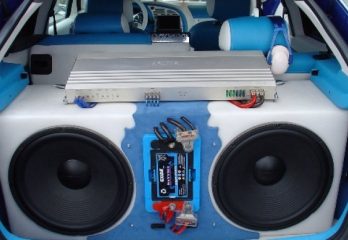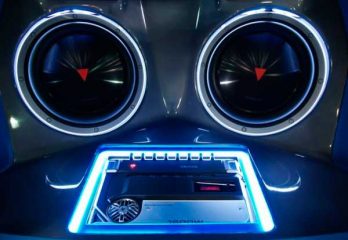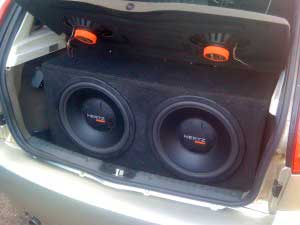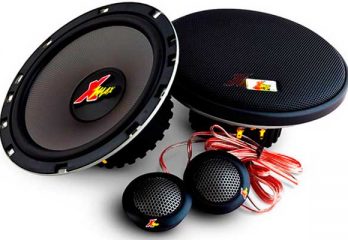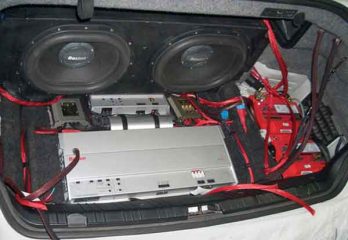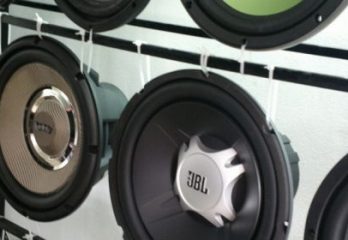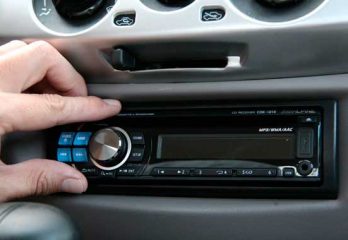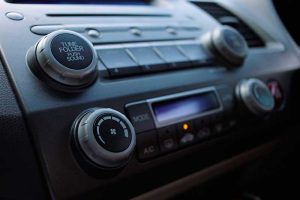 The audio system in the car is an integral attribute of a modern car. And even if you are not an avid music lover, a trip with beautiful pleasant music will always bring pleasure.
The audio system in the car is an integral attribute of a modern car. And even if you are not an avid music lover, a trip with beautiful pleasant music will always bring pleasure.
A great variety of audio components exists on the market today. Based on your preference, you can create different in composition and sound quality audio systems.
The car audio system may include the following components: head unit, speakers, subwoofer, crossover, amplifier, capacitor, processor, and wiring.
Not all of these components are used in standard audio systems. The simplest system includes a head unit, front speakers, and wiring.
More complex audio systems are built on a separate principle and consist of a coordinated head unit, an external amplifier, front and rear speakers, and a subwoofer.
Head unit
The name “head unit” refers to the source of the audio signal and its controls. The head unit includes one or more sources of an audio signal combined in one case. A mandatory element of the head unit is a radio receiver (FM/AM tuner). Also, the head unit may include a CD player (CD receiver, CD changer), multimedia devices – DVD receiver, projection screen, a navigation system, etc.
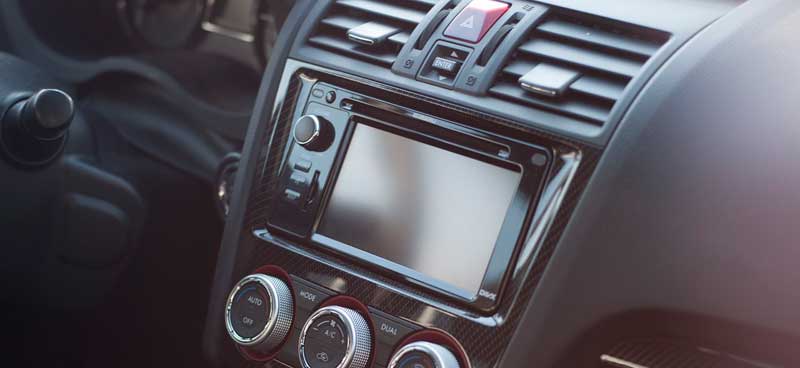
Most modern cars have a regular head unit, i.e., it is installed by the manufacturer of the car.
The head unit is installed in the center of the dashboard between the driver and the passenger. The dimensions of the head unit are standardized in width and height – 1DIN (single din) and 2DIN (double din).
The device in the double DIN form factor is twice the height of the single DIN head unit. Currently, the most popular are double din head units because they use the screen with large dimensions, as well as the touch screen.
The head unit has a built-in internal amplifier with a power of about 15-20 watts, to enhance the sound signal. In some head units, the sound quality is adjusted with the help of an equalizer – adjusting the amplitude of sound vibrations in different frequency ranges. Another attractive feature of the head unit is the automatic adjustment of the sound volume depending on the speed of movement (the faster, the louder).
The head unit has several outputs (channels) that are used to connect speakers and other audio components. Depending on the design, the head unit may include connectors for connecting external devices: AUX-IN line output, USB port, adapter for connecting Apple products (iPhone, iPad).
Car audio speakers
Presented today on the market acoustic systems experts divide into three types:
- Broadband system – is a single speaker responsible for playing the entire frequency range. This type is the most affordable for the buyer, so many car manufacturers equip their cars with such systems. Broadband speaker is enough to listen to radio broadcasts or create a quiet audio background;
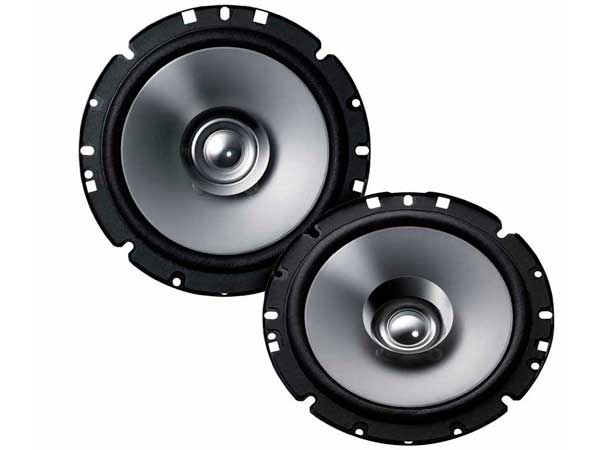
- Coaxial system – a more advanced type of system, which involves the presence of several speakers located in the same housing. The entire frequency range coming from the car stereo, in this case, is divided into LF (low frequencies), MF (mid frequencies), and HF (high frequencies), for the playback of each of which is responsible a separate speaker. This scheme allows to significantly expand the range of reproducible frequencies and increase the quality of the audio system. The coaxial system is the most popular among car owners, as it provides a decent sound quality for relatively little money;
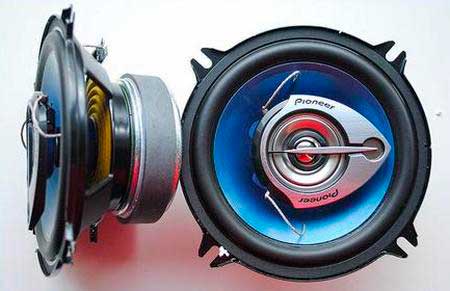
- Component system – the most advanced and, accordingly, expensive audio system. The quality of the system is ensured by the fact that each of the three speakers (HF, LF, and MF) is in a separate housing. Budget component-type systems are often equipped with a pair of low- and mid-frequency speakers (midbass), as well as a pair of high-frequency speakers (tweeters), while more expensive sets additionally have a crossover and a subwoofer.

Choosing car speakers
If we talk about the size of the speakers, experts do not recommend buying devices with a height of 4-5 inches (1 inch — 2.54 cm). It is better to opt for 6.5-inch speakers, as they are good at playing LF (bass).
As a result, if you want to get high-quality playback of the HF, then your choice should stop on the speakers with the smallest diameter of the diffuser. If your primary goal is to obtain deep and high-quality bass, then choose the speakers with the largest diameter of the diffuser.
Deep Bass Subwoofers
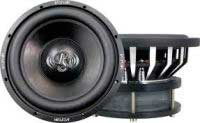 The subwoofer is designed to reproduce low-frequency audio signals, which are at the lower threshold of auditory perception. The subwoofer is a single-band speaker system consisting of a low-frequency emitting head and housing.
The subwoofer is designed to reproduce low-frequency audio signals, which are at the lower threshold of auditory perception. The subwoofer is a single-band speaker system consisting of a low-frequency emitting head and housing.
The main parameter of the subwoofer is the power, which is in the range of 100-300 watts or more. The power depends on the parameters of the diffuser, the more, the more powerful the bass sounds. The diameter of the subwoofer is usually 8-18 inches (16-40 cm).
According to the method of execution, they can be divided into two types: housing and subwoofer speakers (free-air or heads, as they are also called).
The latter can more be divided into:
- built-in rear seat shelf;
- for installation in the housing (closed box, the parameters of which are pre-calculated).
To date, there are subwoofer heads of 5 basic sizes: 8″, 10″, 12″, 15 inch subwoofer and 18″. Golden mean – the size of 10-12″, the optimal ratio of sound pressure and resonance. Read our guide on compact subwoofers with the list o top 5 small subs.
As for the housing subwoofers, in relation to the power amplifier, they are divided into:
- Active. The active subwoofer includes a built-in amplifier and an active crossover to filter high frequencies.
- Passive. The passive subwoofer does not have an integrated power amplifier and is connected to the amplifier channel or in parallel with the main acoustics.
Car Amplifier
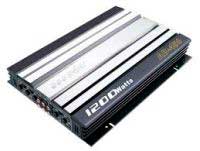 The amplifier is designed to increase the power of the signal and improve its sound. The term “car amplifier” is used to refer to an electronic amplifier separated from other components of an audio system. Most head units have a built-in amp, but its power is not always enough, or it does not satisfy the consumer.
The amplifier is designed to increase the power of the signal and improve its sound. The term “car amplifier” is used to refer to an electronic amplifier separated from other components of an audio system. Most head units have a built-in amp, but its power is not always enough, or it does not satisfy the consumer.
The external amplifier can be installed in various parts of the car, mainly in the trunk. The main characteristics of the amp are the nominal output power and the range of reproducible frequencies. The amp is selected with some margin in power, calculated as, for front and rear speakers – 75-100 watts, for the subwoofer – 150-300 watts.
Structurally, amplifiers are divided into analog (electrical signal processing) and digital (digital signal processing). Digital 4 channel car amplifiers offer more options for parameter control. Digital Signal Processing (DSP) allows you to program the frequency response for each speaker output individually. Also, the digital amplifier may include:
- cascade filter (increases or decreases the amplitude of the signal in a certain frequency range);
- delay module (delays the signal for the rear system by a few milliseconds, enhancing the effect of presence);
- distortion limiter (supports low non-linear distortion ratio).
The frequency response of a digital amplifier can be adapted to the specific features of the vehicle interior, which allows you to attenuate frequency bands falling into resonance with the elements of the interior, and increase individual frequencies, attenuated by sound-absorbing interior materials.
Car Audio Capacitor
Many car owners add a capacitor to the audio system. When choosing, it is necessary to take into account that for 500 watts of the rated power of the system, a capacitor with a capacity of 0.5 F is enough.
The car audio capacitor is installed in the system to avoid “drawdown” of the bass at peak loads when the battery and generator power is not enough.
Tips for choosing audio systems in the car
When you have decided on the sound quality and power you want to hear in your car; it is time to choose a specific audio system and its method of installation. There is a proven pattern: the higher the level of the desired audio system, the reputation, and reliability of the brand becomes the greater significance. It is clear that the production of simple speakers with low functional performance does not cause significant technological difficulties, so such a system can be chosen from less rated companies.
Pay attention to the suspension for the speakers. For greater reliability, it is preferable that it was made of a special rubber. In the front of the car cabin high–frequency speakers (tweeters) are mounted, in the rear – low-frequency. It is better to choose speakers with silk diffusers – so the sound quality will be higher. It is always advisable to purchase speakers of diameter as large as possible, as far as the capacity of the car interior allows.
Some motorists try to assemble the acoustics in the car on their own. Do not neglect the services of professionals who will help to mount the audio system in the car properly and adjust the sound. Often, for the installation of serious and complex audio systems, regular places in the car will not be enough. In this case, it will be necessary to purchase additional mounting attachments, which are also better to choose on the advice of an experienced specialist.
